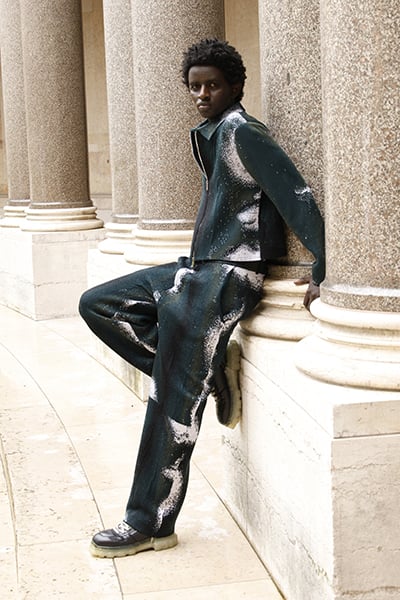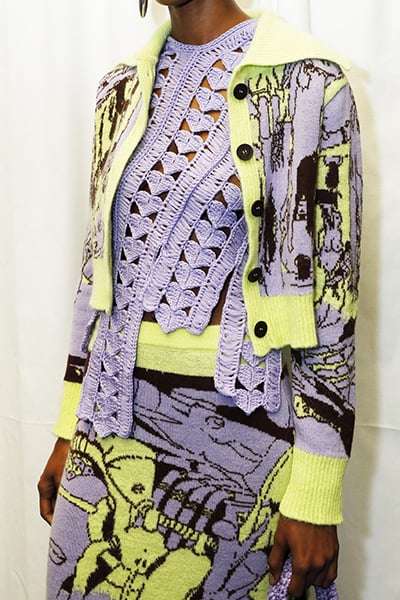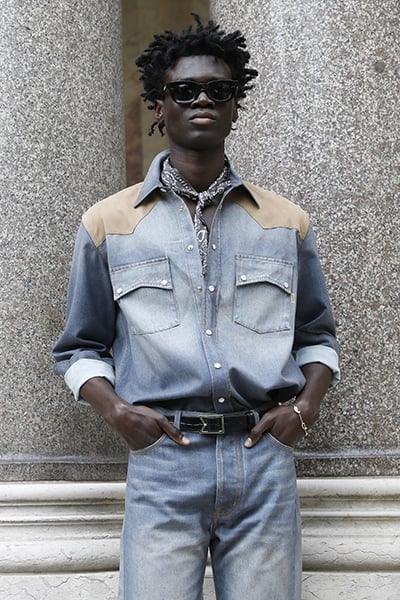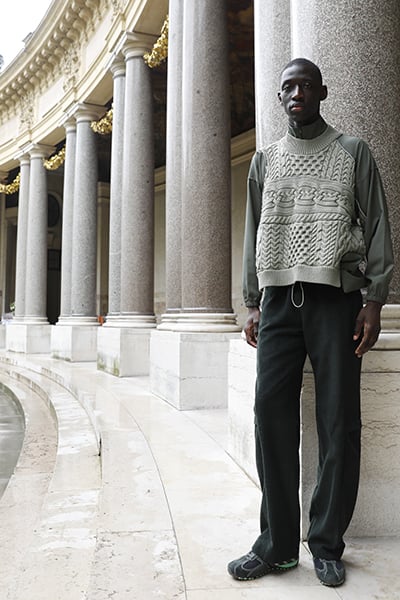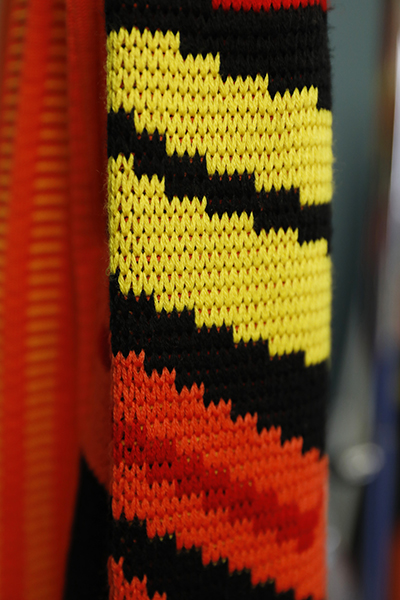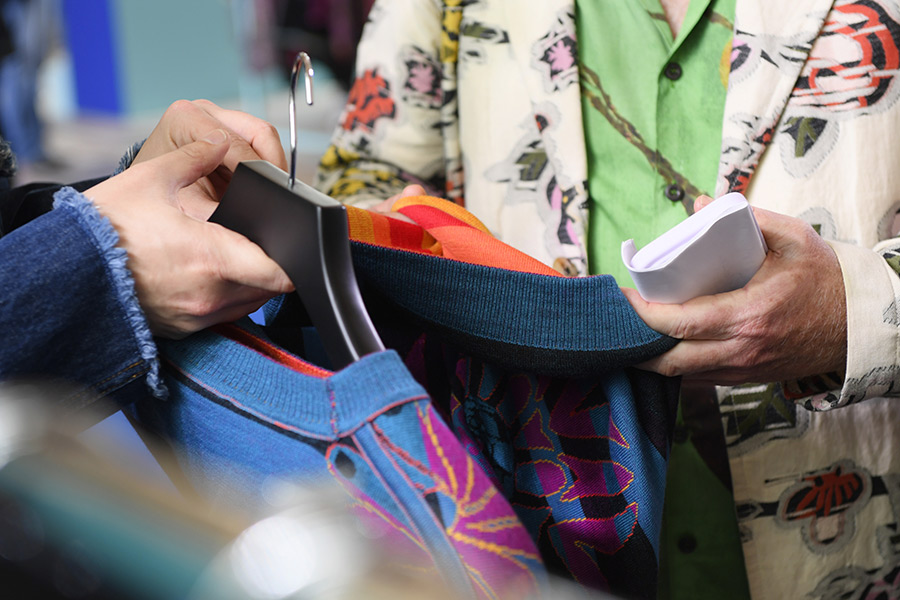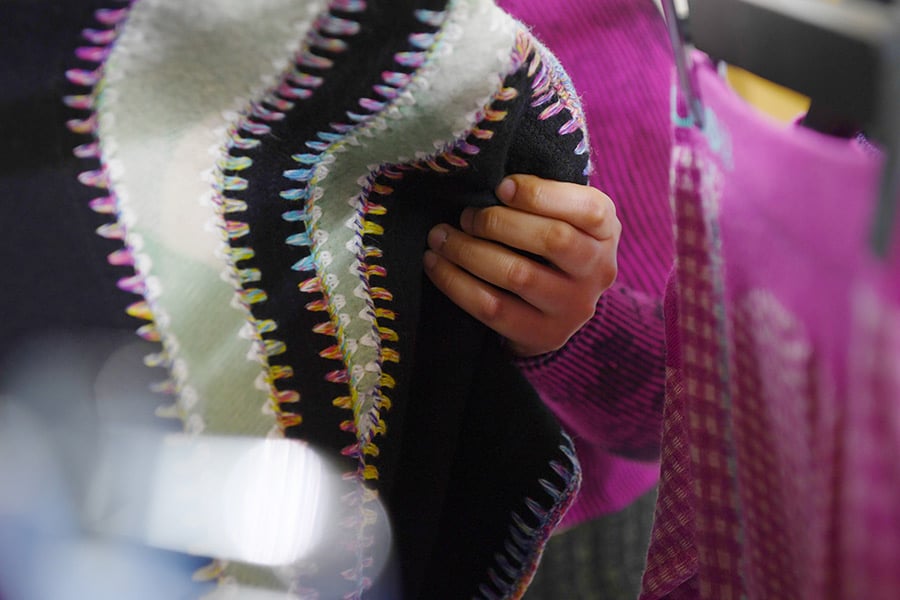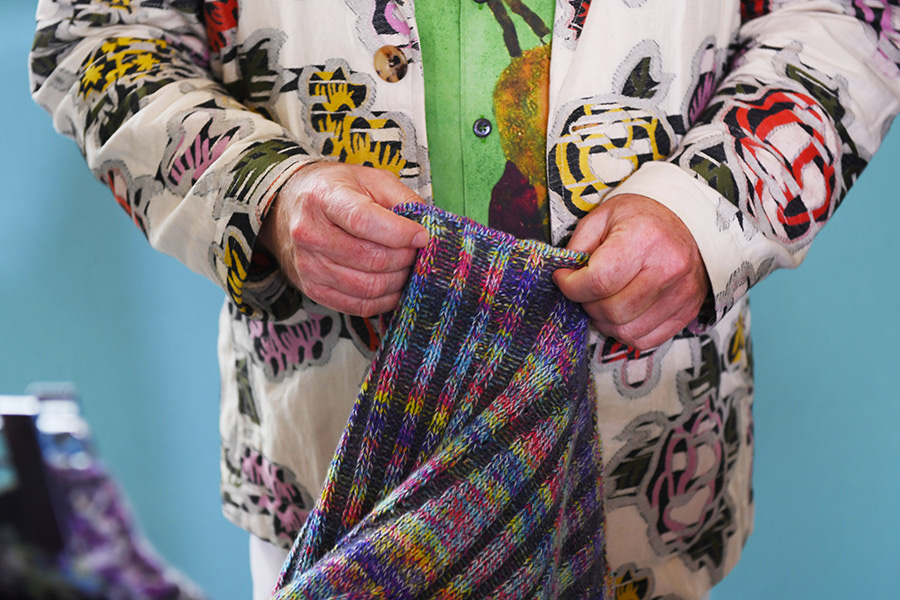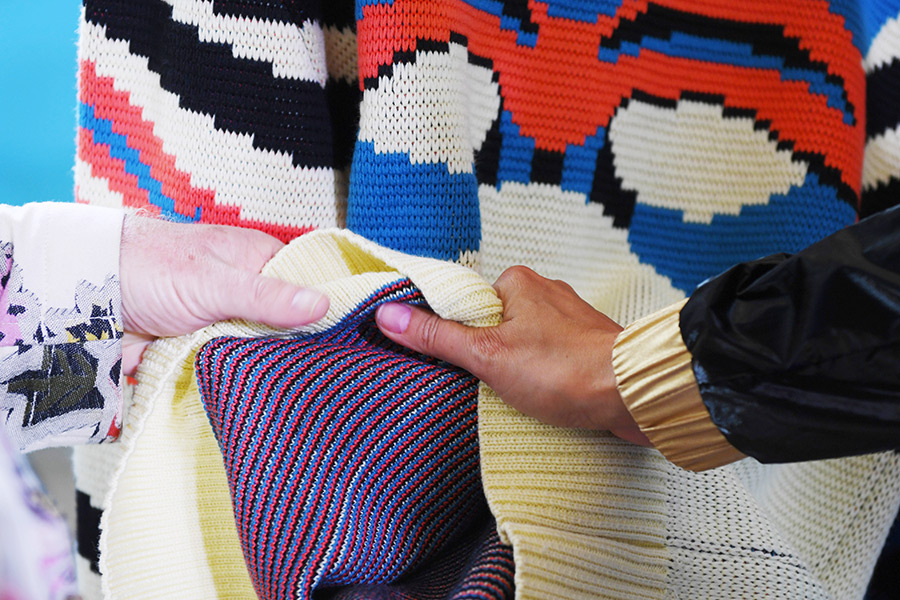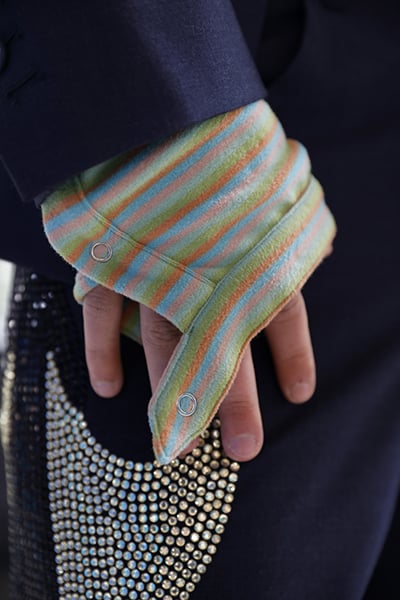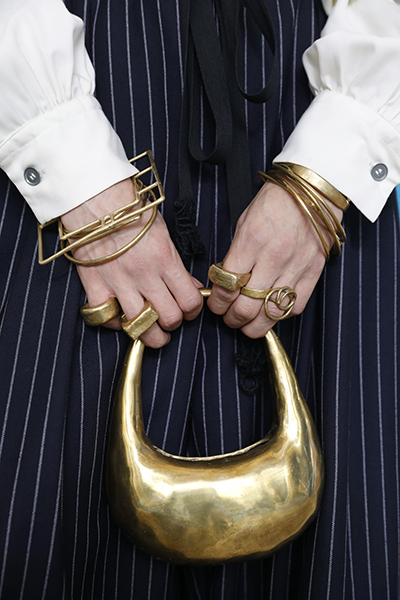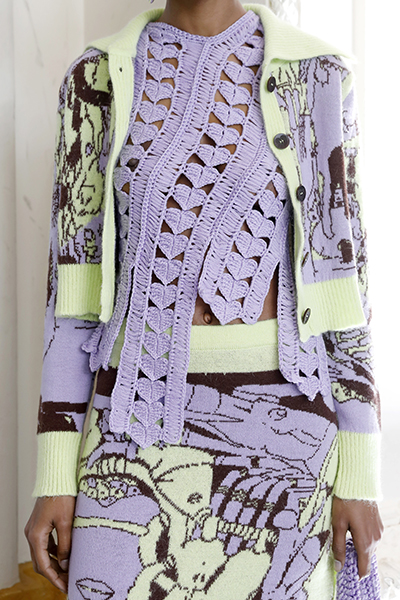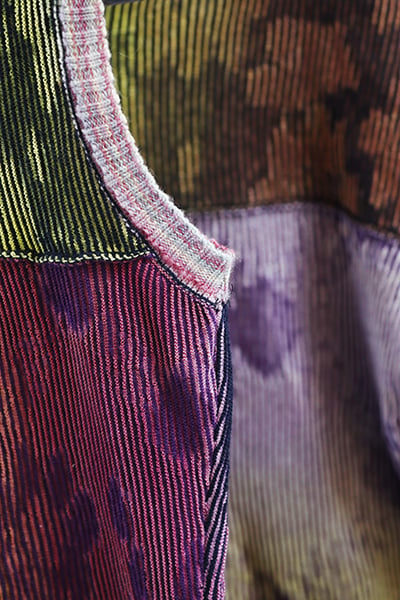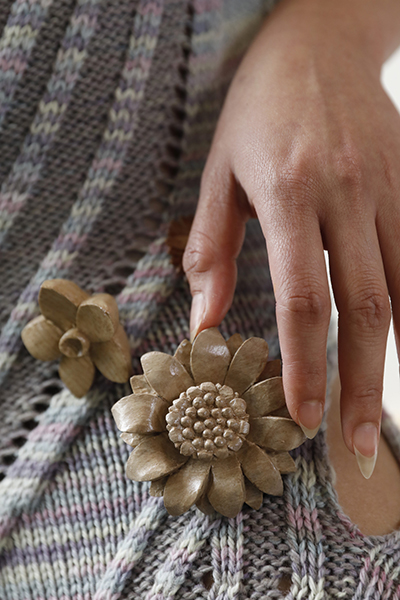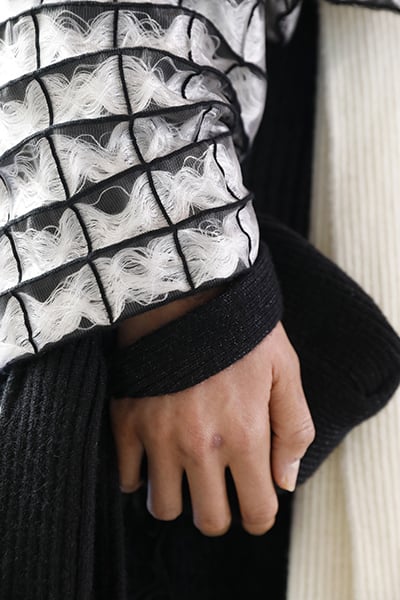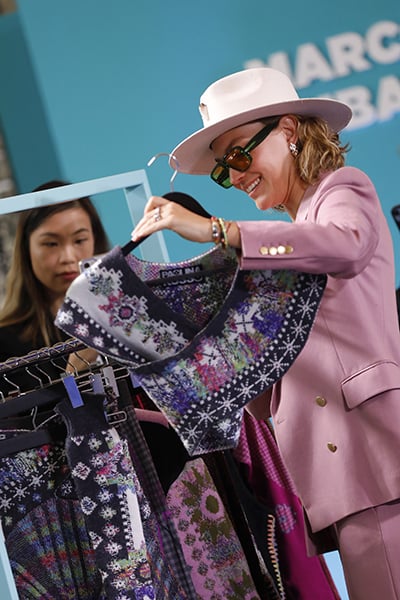Techniques and processes aiming to reduce environmental impact were central at the 2023 International Woolmark Prize. From working with local artisans to choosing deadstock fabrics, discover the key trends from this year’s finalists.
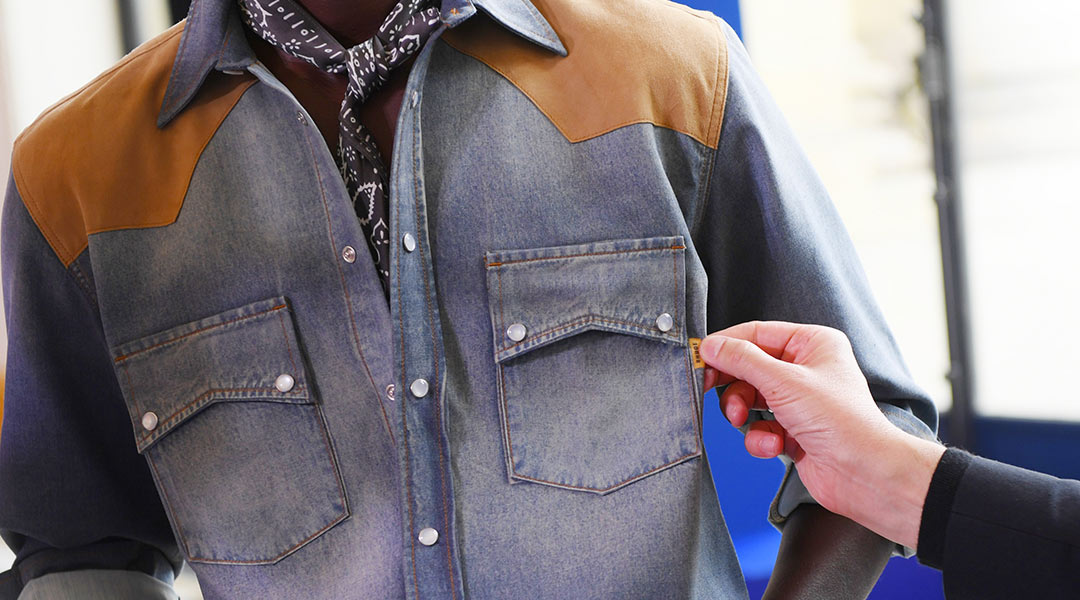
SAVE THE WASTE
Bluemarble
Bluemarble sourced 100% deadstock yarn and fabric for its 2023 International Woolmark Prize collection. Bluemarble took what could have otherwise been waste and pushed the boundaries of knitwear, creating new and bold techniques with Knitwear Lab whilst maintaining Bluemarble’s signature look.
MAXXIJ
MAXXIJ also chose to work with numerous deadstock fabrics in both the initial development and final collection. By breathing new into old fabrics, MAXXIJ repurposed waste into innovative garments such as a wool denim jacket, wool denim pants and a wool quilted coat. MAXXIJ also reduced waste by using innovative seamless knitwear technology by STOLL. By eliminating the need for traditional cut-and-sew techniques, MAXXIJ was able to use the exact amount of wool fabric required to construct a garment. It also allows for a faster production time.
Paolina Russo
By working directly with its suppliers, Paolina Russo was able to control all aspects of production and minimise waste. The brand worked with Laxtons mill to create custom-made yarns, ensuring only what was needed was produced. By using circular and seamless knitting technologies, Paolina Russo ensured zero-waste across the entire collection.
Marco Rambaldi
Upcycling has long been part of the Marco Rambaldi DNA. By turning the old into something new, the brand transforms a memory of the past into the present, creating something unique whilst not adding to landfill. Deadstock fabrics are also used throughout the collection, once again highlighting that avoiding waste is an integral part of the brand’s ethos.
R H U D E
Denim, in a traditional sense, often has a large water footprint. R H U D E’s answer to reducing water waste was digitally printing denim looks onto Super 130’s wool fabrics from William Halsted UK to achieve a different take on wool denim. Digital printing can help limit water waste in denim by eliminating the need for traditional dyeing processes that require large amounts of water. Unlike traditional dyeing processes, digital printing requires very little water and does not create any wastewater. This significantly reduces the amount of water used in the manufacturing process. Digital printing also allows for more precise control over the amount of ink used, which means that there is less wasted ink and fewer chemicals used in the printing process. This reduces the environmental impact of the manufacturing process and improves the sustainability of the denim industry.
Robyn Lynch
Robyn Lynch's Woolmark Prize collection features two trousers made from deadstock virgin wool Gabardine, sourced from long-term supplier, Nona Source, allowing Lynch to access high-quality materials while promoting the use of existing resources.
WORKING WITH NATURE
Paolina Russo
Paolina Russo worked with natural dye artisan Cavan Jayne to hand dye each garment using colours created from natural materials such as roots, flowers and spices. This process allowed the brand to better understand how the colours are absorbed into the yarns, offering further enhancement to the desired gradient effect throughout the collection.
Lagos Space Programme
Lagos Space Programme worked with Adire artisans to create natural indigo-dyed wool textiles. Unlike synthetic dyes, plant-based indigo dyeing uses indigo leaves to create rich blue hues. Adire - which translates to tie and dye - is the name given to indigo-dyed cloth produced by Yoruba women of south-western Nigeria using a variety of resist dye techniques.
TEXTILE INNOVATION
R H U D E
R H U D E explores a new technique to wax coating wool featuring the luxurious tweed plaid. Wax coating on wool fabric provides a protective layer that can increase its longevity and make it more resistant to wear and tear. The resultant fabric is durable, functional and stylish, ideal for outdoor-wear or any activity that requires tough clothing. By using this technique, it added a unique texture and visual appeal to the collection as it almost looks like “leather”.
Marco Rambaldi
Combining the best of wool denim with the best of leather allowed Marco Rambaldi to create an entirely new fabrication as part of its International Woolmark Prize collection. The wool-rich denim fabric is coated with a transparent layer that makes it waterproof and gives it a leather-like hand feel, whilst maintaining all the qualities and the look of a wool fabric.
A. ROEGE HOVE
Through a process of making all the development in its own studio on manual knitting machines, A. ROEGE HOVE explores the constant relationship between the yarn, the machines and the designer’s hands. Working from a subtle contrast of a shift in tension or material, to an almost messy floating piece that waves in the wind like feathers do, allowed A. ROEGE HOVE to not only stay true to its DNA but also create new developments, challenging the craft of knitwear and materials in itself.
Robyn Lynch
A puffer jacket without the microplastics is a breakthrough piece for Robyn Lynch. Using 100% wool filling from Lavalan, the resultant puffer jacket is lightweight, breathable, and moisture-wicking, providing exceptional warmth and comfort for outdoor activities. Lavalan insulation has been paired with an outer shell and lining made from 100% Merino wool to create natural weather protection. Lynch also presents a take on utilitarian workwear, working with CORDURA® Combat Wool™ fabric. This high-performance material offers the natural benefits of Merino wool along with the durability and abrasion resistance of CORDURA® fibre technology.
Lagos Space Programme
A common feature throughout Lagos Space Programme’s Woolmark Prize collection is the innovative use of wool lace. Traditionally a fabric comprised of other fibres, Lagos Space Programme draws on wool’s properties to create a delicate yes strong wool lace fabric as a common thread across their collection.
TRADITION REIMAGINED
Bluemarble
Working closely with Knitwear Lab, Bluemarble was able to push the boundaries of traditional knitwear, creating technical, versatile garments which place great emphasis on individual expression. Creative applications that remain true to the brand include a bold, reversible double-face pullover; an oversized knit ornamented with studs; a jacquard fronted with a trippy mask design; a heavy half-zip sweater bearing “The People Are Kings”; and the signature drawstring top, finely ribbed and painted by hand. Creating a versatile, one-size-fits-all garment, Bluemarble paired a drawstring construction with stretch-ribbed fabric to compliment different body shapes and sizes.
MAXXIJ
Focusing on menswear structure and tailoring, MAXXIJ’s collection features conceptual designs with avant-garde silhouette, technically strong details, multi-fabric constructions and an innovative combination of colours. Working with knit experts Knitwear Lab and using advanced knitting technology from STOLL, MAXXIJ developed super-stretch garments with 3D surfaces. Reimagining a wool jacket, MAXXIJ worked with Sian Textile Co to develop a functional Merino wool fabric using core-spun technology. The resultant garment is both wind and water resistant for ultimate outdoor performance and can be machine washed and tumble dried for total easy care.
Paolina Russo
Paolina Russo’s collaboration with yarn specialists Laxtons resulted in the creation of a custom 100% Merino wool yarn. Beginning at the fibre level, Laxtons spun the wool into unique yarns that were suitable for both natural hand dyeing techniques and modern knitwear machinery. Winding the yarn onto long hanks instead of a traditional cone, the brand was able to achieve a greater surface area, allowing for multiple colours to be applied to the yarn during the dyeing process. Working with knitwear specialists Loop Studio and Eva Carola, Paolina Russo was able to push the boundaries of knitwear by merging traditional handcraft techniques with technological processes. The final collection challenges preconceptions of knitwear beyond jumpers by experimenting with untraditional shapes and constructions, whilst using stitches and motifs that are typically associated with hand-knit woollen garments.
Marco Rambaldi
Crochet has made its comeback, and Marco Rambaldi’s Woolmark Prize collection is no exception, with intricate, modern takes on this traditional stich taking centre stage. Developing new stiches specifically for the 100% Merino wool yarn used breathes fresh life and a modern feel to this long-loved fabrication. This development, playing with new modular elements, allowed Marco Rambaldi to create crochet pieces that can be easily developed in different sizes and can be produced on a larger scale, trying to bring these hand-made sustainable pieces to as many people as possible.
A. ROEGE HOVE
A conceptual knitwear brand, A. ROEGE HOVE challenges traditions with a modern and artistic approach to original craftsmanship and an aim for silhouettes to be both effortless and extravagant. Defined by an experimenting and intuitive way of working with traditional knitwear techniques in an innovative way, the brand wishes to liberate the craft and materials in general from assumptions related to limitations and old school thinking. Its Helena Jacket succeeded in wanting to make a heavier garment without making it a traditional heavy piece of knitwear. A nod to tailoring, this fully fashioned knitted quilted jacket invites conversation about what’s possible within knit and the fascination of what the craft can carry.
Robyn Lynch
Drawing on Robyn Lynch’s Irish heritage, ahero piece emerges in the form of a hybrid knit; contrasting traditional Irish aran cable and modern Japanese Cordura Wool together, in a single piece creating a functional garment, which reflects the contemporary aesthetic and identity of the brand. The Aran jumper in shrink-resistant 100% extrafine Merino wool from E.Miroglio, in Irish-inspired green hues, combine structural elements of traditional Irish Aran cable knit contrasted against a sporty silhouette in a tonal woven fabric.
EMBRACING TECH
MAXXIJ
MAXXIJ's use of NFC technology not only brings physical products pitot he digital realm, but offers greater transparency to the MAXXIJ customer. Partnering with ETRNL VAULT, MAXXIJ offers 100% transparency of the brand's design development process, producer information and raw materials throughout the collection - important but often unseen processes into making a garment. With a highly secure NFC authentication system, MAXXIJ's products can now verify ownership, display premium content – such as music and videos - and provide apparel information guaranteeing authenticity and quality which avoids the risk of counterfeiting.
INVESTMENT IN LOCAL COMMUNITIES AND HANDCRAFTS
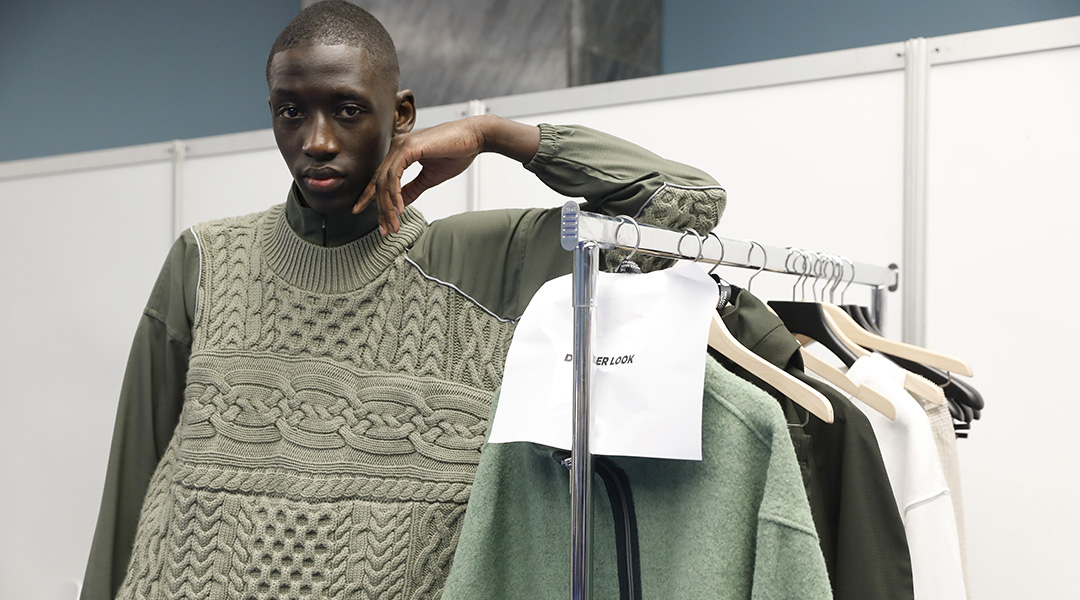
Lagos Space Programme
Lagos Space Programme worked with Adire artisans to produce their Woolmark Prize collection. These intricate Adire works often have hidden motifs used to tell stories in them. These designs ask us to reimagine and decolonise our perception of African fashion. Adire is a traditional type of cloth created and worn by Yoruba women. A standout from Lagos Space Programme's collection is a loose-fit, tailored, deconstructed asymmetrical pinstripe jacket with multiple pockets and metal zip detail made from Merino wool, offering utilitarian elegance which celebrates indigenous Yoruba tailoring.
Robyn Lynch
Creating a small-scale traceable supply chain, Robyn Lynch creates some key pieces from fabrics with a 900-kilometre footprint. The wool fabric is an innovation by Lebenskleidung, using elbwolle™ sourced from German dike sheep and has travelled only 900 kilometres before reaching the warehouse. This benefits the Wendland region by creating new jobs and protecting old sheep breeds. The cooperation is important as it is the first regional project attended and built from scratch. Offering a 100% wool alternative to traditional synthetics polar fleece fabric, Robyn Lynch harnesses the natural properties of wool to enhance this popular fabrication.
